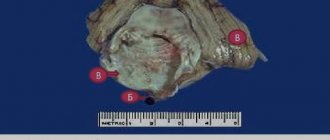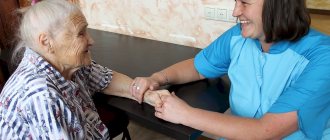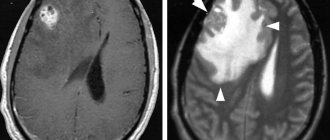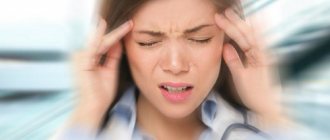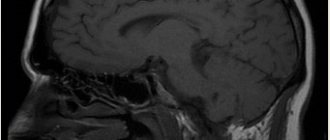Literally minutes count
“The vascular departments use the latest technologies that make it possible to most effectively help a patient with a stroke.
These include emergency operations and thrombolytic therapy, which restores blood supply to the brain,” said Galina Ivanova, chief specialist in medical rehabilitation of the Russian Ministry of Health. — Thrombolysis is included in the procedure for providing care to patients with cerebrovascular accidents. Moreover, innovative thrombolytic drugs, which until recently were purchased exclusively abroad, have begun to be produced in our country.” We are talking about a joint Russian-German project to localize their production at an already existing production site. However, it makes sense to use such methods only if the patient sees a specialist within the first 4.5 hours after the impact. “The prognosis of a patient’s condition after an ischemic stroke depends on the time of thrombolysis literally minute by minute: if you manage it within the first 1.5 hours, one patient in 4-5 has a chance to fully recover, if within three hours, then one in 9, and if in within 4.5 hours, then one out of 14,” noted Galina Ivanova.
Detailed description of all emergency steps
Each activity that includes first aid for a stroke requires proper execution. It is very important to adhere to subtleties, since any “little detail” can be fatal.
No fuss
No matter how serious the patient’s condition, do not panic or fuss. You must act quickly, harmoniously and consistently. Fear, fuss, haste, and unnecessary movements lengthen the time it takes to provide assistance.
Reassure the patient
Every conscious person with a stroke is definitely worried. After all, this disease is sudden, so the body’s stress reaction cannot be avoided. Anxiety will aggravate the condition of the brain. Try to reassure the patient, convince him that everything is not so scary, this happens and doctors will definitely help solve the problem.
Call an ambulance
Calling an ambulance is the first priority. Even the slightest suspicion of a stroke is an indication to call. Specialists will better understand the situation.
Call 103, tell the dispatcher what happened and where. It will take no more than a minute. While the ambulance is on the way, you will provide emergency care.
Assess your general condition
First of all, pay attention to:
- Consciousness: its complete absence or any degree of confusion (lethargy, drowsiness) is a sign of a severe stroke. Mild forms are not accompanied by impaired consciousness.
- Breathing: it may not be impaired, or it may be absent, intermittent, noisy, frequent or rare. Artificial respiration can be performed only in the complete absence of respiratory movements.
- Pulse and heartbeat: they can be clearly audible, rapid, arrhythmic or weakened. But only if they are not detected at all, you can do indirect cardiac massage.
Assess the patient's condition and determine the need for cardiopulmonary resuscitation
Identify the signs of a stroke
Stroke patients may have:
- severe headache, dizziness (ask what is bothering the person);
- short-term or persistent loss of consciousness;
- distorted face (ask him to smile, bare his teeth, stick out his tongue);
- impaired or lack of speech (ask to say something);
- weakness, numbness of the arms and legs on one side, or their complete immobility (ask them to raise their arms in front of you);
- visual impairment;
- impaired coordination of movements.
Lack of consciousness or any combination of these signs is a high probability of a stroke.
Correct position of the patient
Regardless of whether the consciousness and general condition of a stroke patient is impaired or not, he needs rest. Any movements, especially independent movement, are strictly prohibited. The position could be:
- On the back with the head and chest raised - with preserved consciousness.
- Horizontally on the side with the head turned to one side - in the absence of consciousness, vomiting, convulsions.
Correct position of the patient in the absence of consciousness
- Horizontally on the back with the head slightly thrown back or turned to the side - during transportation and resuscitation measures.
It is forbidden to turn a person on his stomach or lower his head below his body position!
If there are cramps
Convulsive syndrome in the form of severe tension of the whole body or periodic twitching of the limbs is a sign of a severe stroke. What to do with the patient in this case:
- Lay on your side with your head turned to prevent saliva and vomit from entering your respiratory tract.
- If you can, place any object wrapped in cloth between the jaws. It is rarely possible to do this, so do not make much effort - it will do more harm than good. Do not try to push the jaws apart with your fingers - this is impossible. Better grab the corners of the lower jaw, try to bring it forward. Do not insert your fingers into the patient's mouth (risk of injury and loss of a finger).
- Keep the patient in this position until the convulsions end. Be prepared for the possibility that they may happen again.
On the importance of the circumstances of the disease
If possible, find out exactly how the person got sick. This is very important, since some symptoms of stroke can also be observed in other diseases:
- traumatic brain injury;
- diabetes mellitus;
- brain tumors;
- poisoning with alcohol or other toxic substances.
Resuscitation: conditions and rules
Advertising:
An extremely severe stroke, affecting vital centers, or accompanied by severe cerebral edema, occurs with signs of clinical death:
- complete lack of breathing;
- dilation of the pupils of both eyes (if only one pupil is dilated - a sign of a stroke or hemorrhage in the hemisphere on the affected side);
- complete absence of cardiac activity.
Follow these steps:
- Place the person on their back on a hard surface.
- Turn your head to the side, use your fingers to free the oral cavity from mucus and foreign objects (dentures, blood clots).
- Throw your head back well.
- Grab the corners of the lower jaw with 2–5 fingers of both hands, pushing it forward, while using your thumbs to slightly open the patient’s mouth.
- Artificial respiration: cover the patient’s lips with any cloth, and, pressing your lips tightly, take two deep breaths (mouth-to-mouth method).
- Heart massage: Place your right hand on top of your left (or vice versa), interlocking your fingers. Applying your lower palm to the junction of the lower and middle parts of the patient's sternum, apply pressure to the chest (about 100 per minute). Every 30 movements should alternate with 2 breaths of artificial respiration.
What medications can be given for a stroke?
If an ambulance is called immediately after a stroke occurs, it is not recommended to give the patient any medications on your own. If delivery to the hospital is delayed, the following drugs (preferably in the form of intravenous injections) help support brain cells at home:
- Piracetam, Thiocetam, Nootropil;
- Actovegin, Ceraxon, Cortexin;
- Furosemide, Lasix;
- L-lysine escinate.
Self-help for stroke
The ability to help yourself with a stroke is limited. In 80–85% of cases, a stroke occurs suddenly, manifested by a sharp deterioration in condition or loss of consciousness. Therefore, patients cannot help themselves. If you experience stroke-like symptoms:
- take a horizontal position with the head end raised;
- tell someone you feel bad;
- call an ambulance (103);
- adhere to strict bed rest, do not worry and do not move excessively;
- release the chest and neck from constricting objects.
Helping yourself if you have a stroke
It won't go away on its own
However, the number of patients admitted to hospital on time is still low. It seems that the ambulance on such calls arrives much faster, and they take the patient not to the nearest hospital, but to where there is a specialized department. But, unfortunately, there are many cases when the victims themselves and their relatives put off calling an ambulance, in the hope that “it will go away on its own.” Actually, the project “Stroke in Lens” is intended to once again remind us all of the threat of vascular catastrophe, which can happen at any time even in apparently healthy people.
“It is necessary that as many citizens of our country as possible know the first external signs of a stroke - a skewed smile, incoherent speech, the inability to raise both arms,” Ivanova said. “And, faced with their manifestations in one of our relatives, acquaintances, or just passers-by, we called an ambulance immediately.”
If the stroke is hemorrhagic
Symptoms that speak in favor of hemorrhagic stroke:
- arose abruptly at the height of physical or psycho-emotional stress;
- there is no consciousness;
- have convulsions;
- the neck muscles are tense, it is impossible to bend the head;
- high blood pressure.
In addition to standard care, such patients need:
- The position is strictly with the head end elevated (except for convulsions or resuscitation).
- Applying an ice pack to the head (preferably to the half in which hemorrhage is suspected - opposite to the immobilized tense limbs).
Features of providing assistance on the street
If a stroke occurs on the street, first aid has the following features:
- Involve several people to help. Organize the actions of each of them, clearly distributing responsibilities (someone calls an ambulance, and someone assesses the general condition, etc.).
- Having placed the patient in the desired position, free the neck and chest to make it easier for him to breathe (remove the tie, unfasten the buttons, loosen the belt).
- Wrap up the limbs, cover the person with warm clothes (in cold weather), massage and rub them.
- If you have a mobile phone or contacts with relatives, inform them about what happened.
Treatment and prevention of cerebral edema
The most severe stroke occurs when cerebral edema develops. Cerebral edema usually develops in the first 24-48 hours from the onset of an ischemic stroke, reaches its peak on the 3rd – 5th day and begins to slowly regress on the 7-8th day. There is a direct relationship between the size of the infarction and the degree of cerebral edema. In some patients with an almost complete infarction in the middle cerebral artery (malignant infarction), cerebral edema and intracranial hypertension can lead to herniation and death. About 80% of patients with malignant infarction of the middle cerebral artery die due to severe cerebral edema, which leads to brain dislocation, compression of vital structures of the brainstem, which is accompanied by increasing depression of consciousness. The more severe the cerebral edema, the more severe the stroke.
To prevent the development of cerebral edema, the patient's head and upper torso must be elevated by 20-30 degrees. It is necessary to normalize body temperature, control blood pressure, relieve pain, strive for normovolemia, and avoid intravenous administration of glucose-containing and hypotonic solutions. The main methods with which the treatment of cerebral edema begins are osmotherapy and hyperventilation. The goal of osmotherapy is to increase plasma osmolarity to 300-320 mOsm/L. Among osmodiuretics, glycerol, mannitol, and Hyperhaes are used.
Dehydration
Dehydration is carried out to combat cerebral edema and increased intracranial pressure
.
Indications for prescribing drugs:
1. signs of cerebral edema identified by CT scan,
2. rapidly increasing neurological symptoms, indicating incipient dislocation and signs of brain herniation.
For dehydration, osmotic diuretics, saluretics, corticosteroid hormones, and mechanical ventilation in the mode of moderate hyperventilation are used. In addition, in the acute stage of a stroke, in the initial phase of the formation of cerebral edema, normalization of breathing, hemodynamics, stimulation of venous outflow from the cranial cavity plays no less a role than the prescription of dehydrating agents.
Osmodiuretics
- Glycerin
is the most preferable, has a longer effect (with intravenous administration - 10 hours), does not cause a significant rebound phenomenon, sudden hypervolemia and a rise in blood pressure. Prescribed IV drip - 10% solution per saline. solution at the rate of 1-2 ml/kg for 2 hours. There is a rapid regression of cerebral symptoms and a decrease in platelet aggregation. Glycerin can be administered into the stomach through a tube at the rate of 1 g/kg 1-2 times a day. A decrease in maximum liquor pressure in ischemic stroke by 72%, and in hemorrhagic stroke by 85–90% has been shown (Misyuk N.S., Kurgaev V.I., 1981). The action of glycerol is shorter than that of mannitol. - Mannitol –
increases the osmotic pressure in the tubules and interferes with the reabsorption of water, which leads to water retention in the tubules and an increase in urine volume. Administer intravenously in a stream or drip in the form of a 10-20% solution at a dose of 0.5-1.5 g/kg body weight, followed by 0.5 g/kg every 3-6 hours. If necessary, the administration of mannitol in this mode can last 3-4 days. Long-term use of mannitol, as well as exceeding the osmolarity level above 320 mOsm/L, can lead to changes in water and electrolyte balance, renal pathology, and can also cause rebound intracerebral hypertension. To prevent rebound syndrome, furosemide can be added at a dose of 1 mg/kg intravenously.
Saluretics
- Furosemide (Lasix) and uregit
increase diuresis by inhibiting the resorption of potassium and chlorine ions in the renal tubules and reduce the production of cerebrospinal fluid. - Their use is advisable only with sufficient central nervous system; they complement the action of osmotic diuretics. They themselves cannot quickly and effectively reduce ICP, but they reduce the production of cerebrospinal fluid.
- Furosemide (Lasix
) is administered intravenously and intramuscularly at a daily dose of 40 – 100 mg (1 amp. – 2 ml of 1% solution contains 20 mg of the drug). - Uregit
is administered intravenously 50 mg in 50 ml of isotonic solution; it is less effective
When prescribing any dehydrating agents, it is necessary to monitor osmolarity ( N = 295-300 mmol/kg) and the concentration of sodium, glucose, urea in the blood serum, diuresis (normally 100 ml per hour or 1500 - 2000 ml per day).
Corticosteroid hormones
(dexamethasone, prednisolone) have a predominantly membrane-stabilizing effect and contribute to the normalization of the BBB.
- Their use has no evidence base
Dexamethasone
administered at a dose of 32 mg per day 2 to 4 times a day, depending on the severity of the stroke, lasting 3-4 days.
Dexamethasone and other corticosteroids have not proven effective as a treatment for cerebral edema in strokes, and their use even increases mortality due to the development of infectious and hemorrhagic complications.
can be used to quickly and effectively reduce intracranial pressure .
It lasts for about 2-3 hours and may be useful as a maintenance measure before surgery. As with osmotherapy, if normal ventilation is resumed too quickly, the effects of increasing intracranial pressure may occur.
If the above methods are ineffective, hypothermia can be used to treat cerebral edema .
Moderate hypothermia (33-36°C) significantly reduces mortality in patients with malignant infarctions of the middle cerebral artery, as evidenced by data from studies. Side effects of hypothermia include thrombocytopenia, bradycardia, and pneumonia.
In case of ineffectiveness of drug treatment, hyperventilation and hypothermia, increasing cerebral edema (usually in patients with malignant middle cerebral artery infarction), it is necessary to consider decompression surgery
. The purpose of the decompression method is to prevent the spread of cerebral edema into the lateral ventricles, diencephalon, midbrain, reduce intracranial pressure, increase perfusion pressure, and preserve cerebral blood flow by preventing compression of collateral vessels.
Surgical treatment of cerebral edema ( hemicraniectomy
) for malignant infarctions of the middle cerebral artery can reduce mortality from 80 to 40%. Early use of this method (within the first day after the onset of stroke), according to data, can further significantly reduce mortality. Decompression of the posterior fossa for cerebellar infarctions is the first choice method and can reduce mortality from 80% with conservative treatment to 30%. Currently, several multicenter studies have been conducted that will allow us to draw a conclusion about the effectiveness of this treatment in selected groups of patients.
Neurological complications, in addition to cerebral edema, include seizures
, which may occur in 4-7% of patients. As a rule, they occur on the first day after the onset of stroke in patients with large infarctions involving the cerebral cortex, as well as in ischemic strokes caused by embolism.
Features of providing assistance at home or in any enclosed space
If a stroke occurs indoors (at home, in an office, in a store, etc.), then in addition to standard first aid, pay attention to:
- Free access of fresh air to the patient: open the window, door.
- Release your chest and neck.
- If possible, measure your blood pressure. If it is elevated (more than 150/90 - 160/100 mmHg), you can give antihypertensive drugs under the tongue (Captopress, Farmadipin, Metoprolol), lightly press on the solar plexus or on closed eyes. If it is low, raise your legs, but do not lower your head, massage the area of the carotid arteries on the sides of the neck.
How to provide first aid for a stroke indoors



